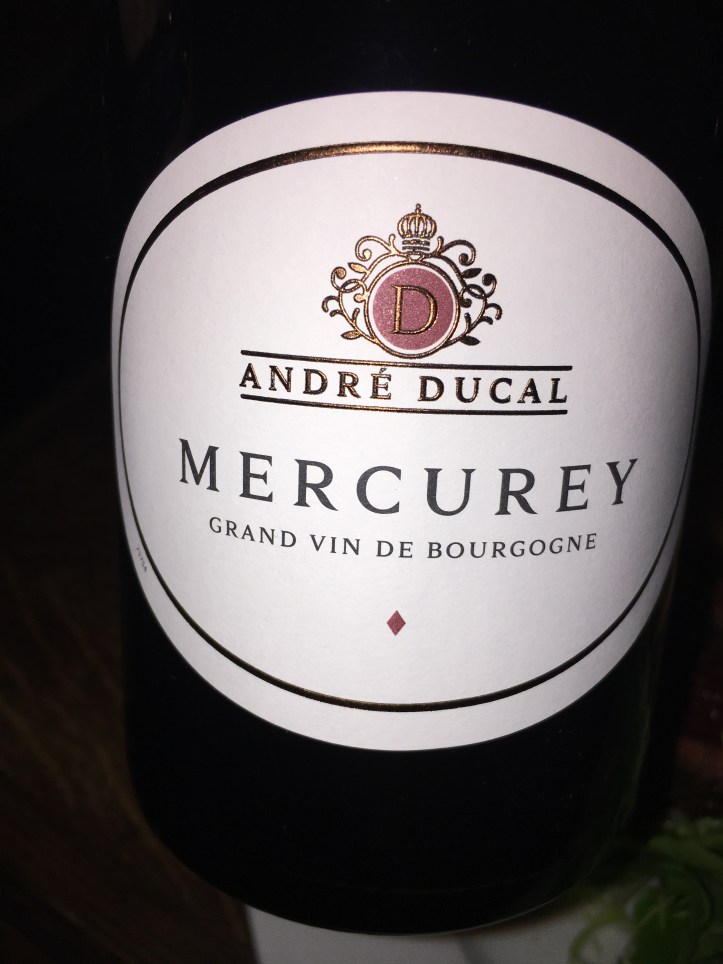
While not as famous as the red wines from the Côte d’Or, Pinot Noir produced in the village of Mercurey can provide outstanding value for the price. You won’t find any Grand Cru offerings here, but there are plenty of good bottles that will satisfy your craving for red Burgundy while leaving your wine budget intact.
I was inspired to write this post as a member of the blogging group French #Winophiles. The third Saturday of the month we explore a topic of interest to French wine lovers, be it a grape variety, style of wine, or a geographic region. Participants write blog posts on the theme, then we gather at 11 am eastern time to discuss what we’ve learned and share our thoughts with each other.
In May, we took a virtual trip to the Côte d’Or, home to some of the world’s most sought-after wines fashioned from Chardonnay and Pinot Noir. Our host, Lyn from binNotes/redThread led us in a discussion of exquisite temptations from the Côte de Nuits to the Côte de Beaune. If you’re a Burgundy fan, check out what drove our conversation HERE. This month she takes the reins again, leading us through the southern reaches of Burgundy: the Côte Chalonnaise and Mâconnais.
If you’re intrigued by Burgundy – and who isn’t? – join the conversation this Saturday. It’s easy to do: follow the chat or jump into the fray on Twitter, using #winophiles in all of your tweets. We want to hear from you!
Here’s a preview of what the French #Winophiles will be talking about:
Jeff Burrows of FoodWineClick serves up “Salmon and Morels with the Domaine Wines of Louis Max.”
Jill Barth of L’Occasion shares “Historic Vineyards of Burgundy.”
Michelle Williams of Rockin Red Blog regales us with: “A Journey Through Burgundy Part 2, Exploring Mâconnais with #Winophiles.”
Gwendolyn Lawrence Alley of Wine Predator takes on: “Bourgogne with Beef Bourguignon from an Instant Pot.”
Lynn Gowdy of Savor the Harvest steers us through “Navigating Southern Burgundy: Mâconnaise and Beaujolais.”
Camilla Mann of Culinary Adventures with Cam tipples through “Touring Burgundy by Glass: It’s the End of the School Year and I Need a Drink!”
Jane Niemeyer of Always Ravenous explores “Discovering Rully Chardonnay + Bouzeron Aligoté in Burgundy’s Côte Chalonnaise.”
Nicole Ruiz Hudson of Somm’s Table schools us with “Cooking to the Wine: Jean-Marc Brocard Sainte Claire Chablis with Clam and Burrata Pizza.”
Wendy Klik of A Day in the Life on the Farm dips her toe in “Provence meets Burgundy.”
L.M. Archer of binnotes.com pours forth on “Burgundy’s Overlooked ‘Other’ White Wine.”
Right here at The Swirling Dervish, we’re talking about “Mercurey Rising: Pinot Noir from Burgundy’s Côte Chalonnaise.”
A Little Background on the Côte Chalonnaise
As you can see from this BIVB Map of Burgundy, the region as a whole looks like two slightly southwest-leaning strips connected by a bridge running north to south. That middle section is the Côte Chalonnaise. It abuts the Côte d’Or to the north and the much larger Mâconnais to the south. While it seems to be physically connected to the southern edge of the Côte de Beaune, the terrain changes as you travel south. The escarpment or spine of the Côte de Beaune gives way to a series of rolling hills nestled among orchards and farm land.
Vineyards lie at higher altitudes here than in the Côte d’Or, with some planted at nearly 1,000 feet. Wind damage and frost are perpetual threats to ripening, and harvest in the Côte Chalonnaise typically occurs a week later than in the north. That said, this middle stretch of Burgundy produces red and white wines of quality that can be great values for the budget-minded yet discerning wine shopper.
Major Wine Producing Communes
Wine is produced throughout the Côte Chalonnaise, but the best wines tend to come from five communes. They may label their wines using the commune name or under the more general Bourgogne-Côte Chalonnaise appellation. Here’s a list, traveling from north to south:
- Bouzeron – Famous for its production of Aligoté, Burgundy’s “other” white grape, the town was granted appellation status for Bourgogne Aligoté de Bouzeron back in 1979. In 1997 that was amended to Bouzeron. Aubert de Villaine, co-owner of Domaine de la Romanée-Conti, is among the esteemed producers making Aligoté here.
- Rully – One of the few places in the Côte making more white wine than red, Rully specializes in crisp, high-acid wines that, in warm years, can be terrific values. In cooler vintages, winemakers turn their hands to crafting excellent Crémant de Bourgogne, the local sparkling wine.
- Mercurey – More on this commune in the next paragraph.
- Givry – With a focus on red wines from Pinot Noir, this small region is known for wines meant for early drinking. They tend to be lighter and more approachable than the bigger reds produced in neighboring communes.
- Montagny – White wines produced here are based on Chardonnay and tend to be rounder and fuller in body, at times resembling their more expensive cousins from the Côte de Beaune.
Mercurey
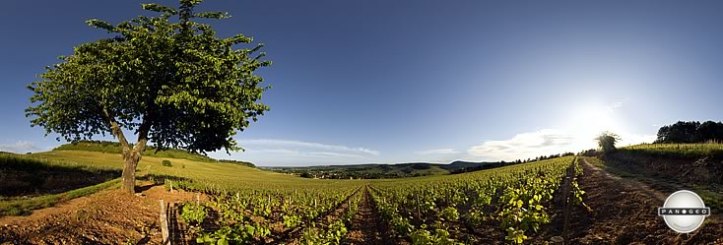
This commune takes its name from a Gallo-Roman temple that once stood atop a hill in the Premier Cru village of Voyens. The temple was dedicated to Mercury, the Roman god believed to rule such disparate realms as commerce, communication, travel, trickery and thieves. He also reportedly guided souls to the underworld. (Maybe as punishment for all that trickery?) At one time the entire Côte Chalonnaise was called the Région de Mercurey.
Almost all of Mercurey’s wines (95%) are red, and you could rightfully call this commune the Pinot production engine of the Côte Chalonnaise. After all, it is responsible for two-thirds of all red wine made here. There are no Grand Crus within the commune (or within the entirety of the Côte) but there are 32 Premier Crus and a slew of lieux dits, or named places that have a proven track record of producing high-quality wines. At last count, Premier Cru vineyards accounted for about 20% of total Mercurey production.
Soil composition varies widely from one vineyard to the next but, in general, marl, limestone, and clay are present in some combination. The Burgundy Wine Bureau (BIVB) officially identifies five distinct soils within Mercurey. If you’d like to know more, here’s a great video from the BIVB on the history of the soil and subsoil, including pivotal events like the formation of the Alps during the Jurassic Period.
Although soil components remain relatively similar throughout Mercurey, elevation and aspect of the vineyards can differ from one plot to the next. Some slopes face south or southeast, taking full advantage of the day’s sunshine. Others face north. All of these differences come through in the wine. Third-generation winemaker Amaury Devillard of Domaines Devillard describes his family’s lands as a “patchwork of colors,” each giving a unique, terroir-driven expression of Pinot Noir. His words make me think that this commune is very aptly named: Mercurey for mercury, the element famous for its ability to change form. A mercurial personality that is clever, lively, and quick.
With so many different expressions possible, Devillard explains the challenge inherent in coaxing the best wines out of each plot. It comes down to matching the right clones to the particular vineyard, and being able to respond to weather and other vintage variations in the appropriate way. Sounds like the vignerons themselves need to be a bit mercurial, here in Mercurey.
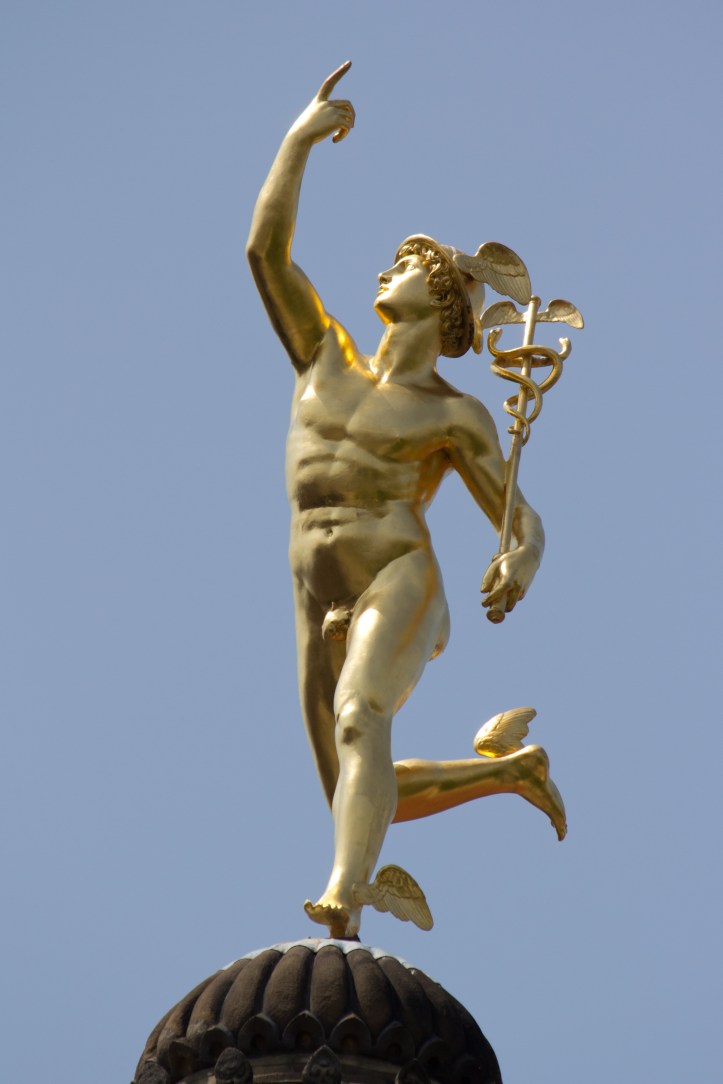
Tasting Mercurey Pinot
Compared with Pinot Noir from other parts of the Côte, Mercurey reds stand out for their deep, dense color, profound red fruit aromas, and distinct earthy notes. Given time to open, Mercurey reds can also offer hints of chocolate and herbs. On the palate, Mercurey Pinot is full-bodied, with firm tannins and acidity framing up all that red fruit and dirt. As with most regions, there are wines crafted for the cellar, destined to improve over the years, and others intended to be enjoyed in the short-term. I’d be happy to stock my shelves with both types; a temptation sure to test my will power and my patience!
An Anniversary to Remember
My husband and I celebrated our fifth anniversary this past December – in Paris! We spent a week over the Christmas holiday roaming around the City of Light, basking in its beauty and eating and drinking very well. When the 22nd arrived, we decided to have dinner in a neighborhood bistro rather than at a fancy restaurant, and we set out for Poulette in the Les Halles quartier. Famous for its belle-époque charm and platters of steak-frites, we figured there was no better place to make a toast to our milestone.
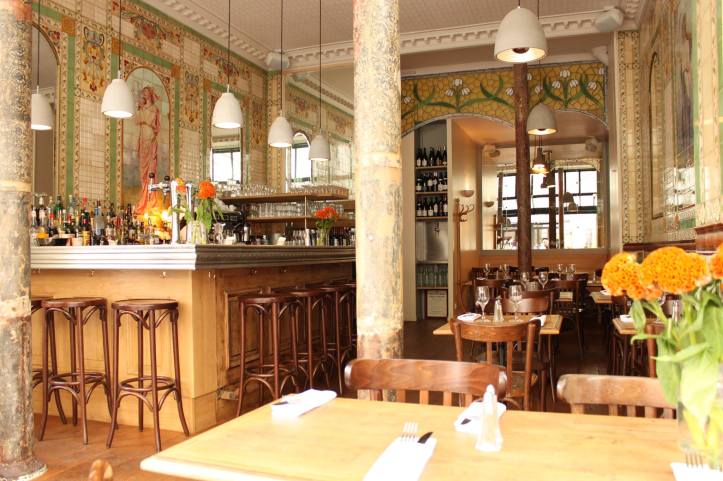
This tiny bistro dates back to the 19th century. With only a handful of tables, the space is dominated by a huge zinc bar that immediately takes us back in time. Colorful tiles bring the walls to life, welcoming us in from the winter chill outside. That welcome is echoed by the owners, whose warmth reaffirms our choice for the evening. We have stumbled upon the most wonderful of secrets; a conduit to the Paris of old, where we huddle over drinks and imagine who we might have been – what our story might have been – 200 years ago.
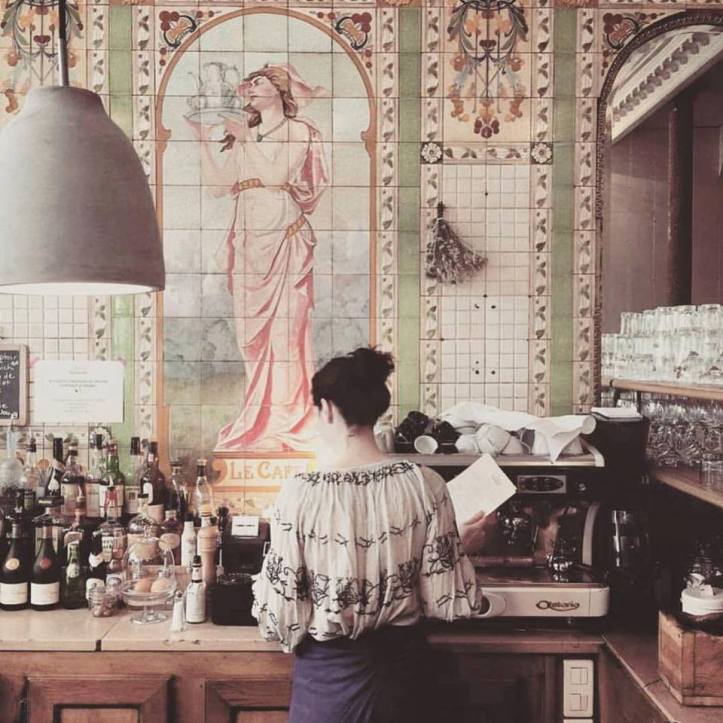
We laugh as we try on the famous personalities of long ago, but then get down to the business at hand: we ordered the steak-frites (of course!) and, as an accompaniment, a bottle of André Ducal Mercurey. It was a simple, yet simply delightful evening together. We indulged in more elaborate meals during our stay in Paris, but I’d be hard-pressed to remember one more enjoyable.
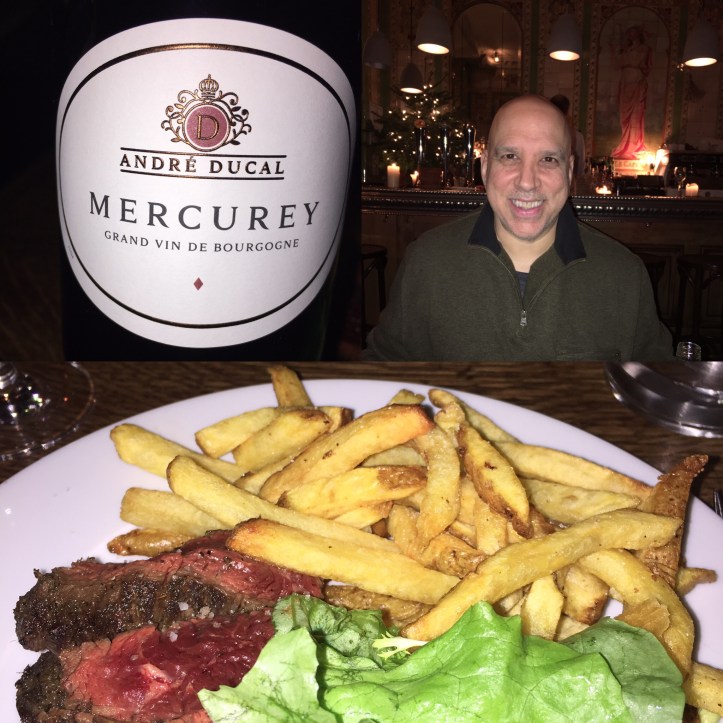
Isn’t it fascinating that no matter how far we travel, how much we learn and how much history we absorb, the little sweet moments of love are life’s monuments?
Great post. I found the BIVB resources very helpful too. The videos are outstanding!
Thanks for sharing!
LikeLiked by 1 person
Thank you, Jill. It was a wonderful evening, for sure. And you’re right about the videos: anything that makes soil composition sound interesting is okay in my book!
LikeLike
It’s nice to hear about the outstanding value for price wines in Burgundy. Absolutely love your description of Mercury. I want to spread it on a piece of toast, seriously! (Minus the tannins and acid 😉 Your 5th year celebration at Poulette sounds lovely, a place added to my list to try!
LikeLiked by 1 person
Thanks Lynn! My only challenge was the wine we had for dinner – I can find absolutely no information on it – anywhere. A mystery for sure! Definitely try Poulette when you’re in Paris – such a winner.
LikeLike
[…] Jane Niemeyer of Always Ravenous explores “Discovering Rully Chardonnay + Bouzeron Aligoté in Burgundy’s Côte Chalonnaise.” […]
LikeLike
Well-tomed homage to one of Burgundy’s hidden treasures. Love the video of Jean-Pierre, and your personal anecdotes!
LikeLiked by 1 person
Thank you! It’s been fun exploring Burgundy with you these past two months. You’ve been a great tour guide!
LikeLike
[…] Lauren Walsh of The Swirling Dervish swirls up “Mercurey Rising: Pinot Noir from Burgundy’s Côte Chalonnaise.” […]
LikeLike
Happy belated anniversary. Does that bistro look quintessentially French or what?! I love it. Great overview of Mercurey. I never knew it was named after the Roman god. Very cool. I do enjoy the wines from the commune. They are ripe but deliver well for their price point. Cheers Lauren!
LikeLiked by 1 person
Thanks Michelle. Next time you’re in Paris, check it out if you have time. We totally enjoyed ourselves! Writing this post reminded me to revisit the wines of southern Burgundy. For some reason I haven’t bought many recently, and that needs to change!
LikeLiked by 1 person
What a nice post, thanks for sharing your recent time in Paris. I did notice that one of you ordered your steak properly cooked. Is that “blue” or just rare? Perfect with a Mercurey by the way!
LikeLiked by 1 person
Rare! Or as the waiter says, “correct.” My husband has slowly come around to eating his steak pretty bloody. I refuse to overcook a beautiful piece of steak! It was delicious and, you’re right, a perfect match with the Mercurey.
LikeLike
Lauren,
Nice summary of the Côte Chalonnaise appellations, and deep dive into Mercurey. I have yet to taste a Pinot Noir from Mercurey, saving a bottle of Domaine de Villaine.
Love your romantic anniversary memory from Paris! Cheers!
LikeLike
Thank you Jane!
LikeLike
I just love that quaint little restaurant and I am very envious of your time spent in France.
LikeLiked by 1 person
It was a really lovely night – casual and relaxed but in a perfectly Parisian bistro. I hope you get to experience Paris for yourself some day!
LikeLike
I particularly enjoyed the Anniversary memory. Puts the whole thing into a lovely context! The wine looks fantastic with that fabulous steak!
LikeLike
Thank you! It was one of the highlights of our Paris trip. And the steak was totally delicious!
LikeLike
[…] Walsh of The Swirling Dervish swirls up “Mercurey Rising: Pinot Noir from Burgundy’s Côte […]
LikeLike